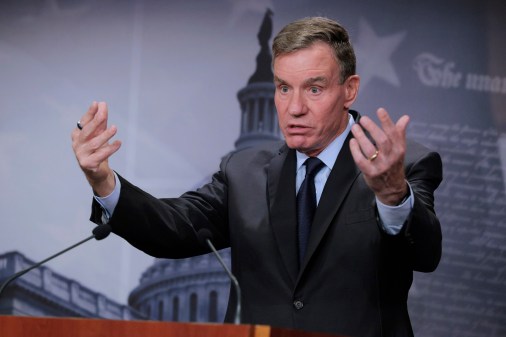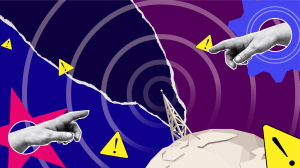US officials warn foreign disinformation from Russia may flood post-election period

The U.S. intelligence community is anticipating a potentially tumultuous post-election period this year, where foreign governments will seek to amplify domestic unrest to cast doubt about the legitimacy of the winner while undermining confidence in democracy.
Officials at the Office of the Director of National Intelligence singled out Russia, using some of their strongest language to date to warn that leaders in Moscow are preparing a full-court press in the final weeks of the election and beyond.
“The intelligence community is increasingly confident that Russian actors are considering — and in some cases implementing — a broad range of influence efforts timed to the election,” an ODNI official told reporters Tuesday.
In a hard-fought presidential election, U.S. officials are increasingly focused on what happens after Nov. 5, when they expect close margins and days of vote counting to be marred by claims of voter fraud, false allegations of election infrastructure hacks, protests, threats and even violence. This time period, from election day through the electoral certification process, represents a “window of vulnerability” that intelligence officials expect Russian propaganda networks to pounce on.
While ODNI officials noted that there remains no evidence that foreign actors are attempting to actually hack or breach voting machines or other election infrastructure, countries including Russia and Iran are “highly likely” to conduct information operations in the period after voting ends. They may also seek to alter or deface public-facing websites to promote confusion.
With election day two weeks away, U.S. agencies have stepped up their coordination as they expect significant disruption and turmoil. As one example, an official said that an interagency group of experts has met six times in the past week alone to review intelligence and discuss possible actions. Another ODNI official said they have received exponentially more nominations this year to their notification framework — an interagency vetting process that identifies foreign influence or interference efforts and notifies victims — than prior election cycles.
While the ODNI’s Foreign Malign Influence Center focuses strictly on disinformation campaigns coming from overseas, in many cases these efforts will complement and boost false information that is already being spread by domestic groups.
Notably, Republican candidate Donald Trump and his allies have waged a scorched-earth campaign to denigrate the integrity of the electoral system since losing the 2020 presidential election. Surveys continually show that a large number of Republican voters and elected officials continue to cast doubt on the legitimacy of the 2020 vote and expect to do the same in 2024 if Trump does not win.
Kremlin-aligned influence actors have repeatedly amplified those claims this year, both through inorganic networks online and at times by laundering pro-Russia narratives through popular American conservative influencers.
Officials said that Russia and Iran have already attempted to recruit American individuals to conduct political protests, citing intelligence that both countries are “willing to at least consider tactics that would contribute to such violence” in service of their larger objectives.
Both Russia and Iran have attempted to amplify, participate in and in some cases organize domestic protests in the United States, often relying on unwitting Americans who also espouse belief in the same causes. In 2020, U.S. officials revealed that actors tied to the Iranian government were behind a website that made death threats toward federal, state and local election officials.
Officials say Russia created manipulated content to feed Tim Walz rumors
A report in Wired this week cited disinformation researchers from Clemson University who claimed that a coordinated effort online to accuse Democratic vice presidential candidate Tim Walz of sexually abusing a former student was being amplified and driven by Russian propaganda actors. One of the parties involved in that effort, Storm-1516, is believed to be behind an earlier staged video purporting to show Democratic presidential candidate Kamala Harris engaged in a hit-and-run accident.
The Wired report also noted that the rumors around Walz were initially pushed by a network run by John Dougan, a former Florida cop who now runs a pro-Russian propaganda outfit in Moscow.
That effort included a seemingly AI-created video of an individual claiming to be a student of Walz who was victimized. When reached by the Washington Post, the individual confirmed he was a former student at the same school but debunked the accusations and said he had never met Walz.
Intelligence officials appeared to back up the Clemson researchers’ claims, telling reporters that Moscow not only boosted the rumors around Walz online, but also created fake content to reinforce their credibility.
“The intelligence community assesses that Russian influence actors created and amplified content alleging inappropriate activity committed by the Democratic vice-presidential candidate during his earlier career,” the ODNI official said, noting a review of the media “revealed several indicators of manipulation that are consistent with the influence efforts and tactics of Russian actors this cycle.”
Officials declined to provide further details on how they were able to link the video and operation to Russian influence actors, except to say that it was based on new intelligence that goes beyond analysis of the manipulated video. Another official said analysts used a mix of proprietary and commercial software tools to analyze the video for signs of manipulation.






